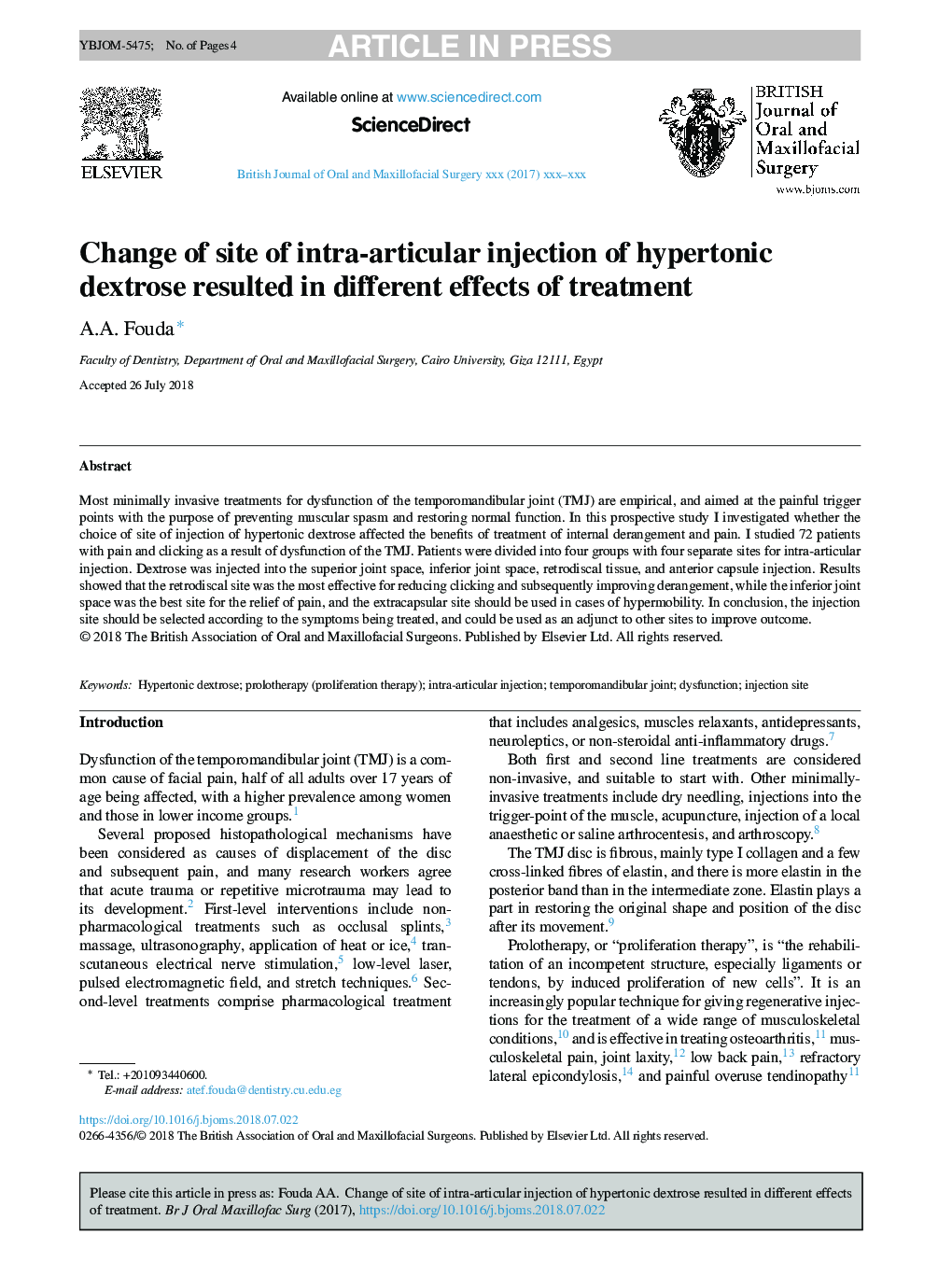| Article ID | Journal | Published Year | Pages | File Type |
|---|---|---|---|---|
| 11018777 | British Journal of Oral and Maxillofacial Surgery | 2018 | 4 Pages |
Abstract
Most minimally invasive treatments for dysfunction of the temporomandibular joint (TMJ) are empirical, and aimed at the painful trigger points with the purpose of preventing muscular spasm and restoring normal function. In this prospective study I investigated whether the choice of site of injection of hypertonic dextrose affected the benefits of treatment of internal derangement and pain. I studied 72 patients with pain and clicking as a result of dysfunction of the TMJ. Patients were divided into four groups with four separate sites for intra-articular injection. Dextrose was injected into the superior joint space, inferior joint space, retrodiscal tissue, and anterior capsule injection. Results showed that the retrodiscal site was the most effective for reducing clicking and subsequently improving derangement, while the inferior joint space was the best site for the relief of pain, and the extracapsular site should be used in cases of hypermobility. In conclusion, the injection site should be selected according to the symptoms being treated, and could be used as an adjunct to other sites to improve outcome.
Related Topics
Health Sciences
Medicine and Dentistry
Dentistry, Oral Surgery and Medicine
Authors
A.A. Fouda,
